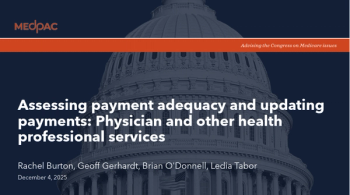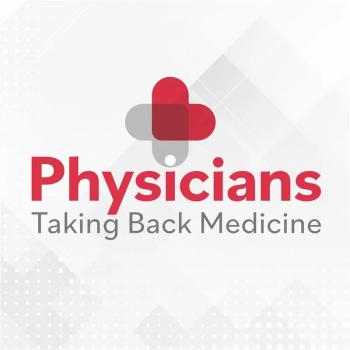
- September 10, 2018 edition
- Volume 95
- Issue 17
Getting a handle on healthcare paperwork
Take a serious look at what is being done, when, and by whom, to answer the questions of what is necessary work for patients and for the business.
Doctors listed the burden of paperwork / quality metrics as their top concern in the Medical Economics 89th Annual Physician Report.
Paperwork? I thought medicine was fully electronic? But there is now more administrative work rather than less as the shift to fully digital practices proceeds along the same lines as the shift to value-based care and its data requirements.
Physicians continue to struggle with all being asked of them. One driver of additional administrative work is the demand from the Merit-based Incentive Payment System (MIPS) to gather “essential” data. Another is to keep up with ever-changing demographic and insurance data for the practice.
None of this appears to have a direct benefit for the patient but it is necessary for the operation of the business. This is best tracked and housed in the electronic system(s) accessed daily.
A simple way to address additional administrative tasks is to talk about it at the clinician level. This communication would be built on evidence-based discussions.
The first questions for physicians are:
- Do I need this information?
- Why do I need it?
- Does it benefit the patient or the business?
- What is the best way to retain and access it now and in the future?”
Another key question is: What is necessary to improve patient care? That’s a decision both patient- and specialty-specific. It is also related to what is needed for the practice or system, since patient data is expected to be shared with referring physicians.
Further, the business focus must be considered. Is it worth continuing with the MIPS program? Are we gathering demographic and insurance information in a timely manner and reviewing it frequently enough? If staff is too busy doing unnecessary tasks, they are not supporting the patient process as effectively as they should.
Using the “5S” workplace organization methodology in all areas of “paperwork” can help tremendously. The idea is to reduce paperwork or clutter in the work area. Work areas include the exam rooms, nurses’ station, and the clinician office.
If you look around at any of these areas, there are items that distract your attention or get in the way of “finishing” your current task. Following the 5S will start and keep you on the path to an efficient work environment and facilitate the reduction of paperwork. The 5S model is:
- Sort: identify what is needed, eliminate everything else
- Set in order: determine where needed items go and when
- Shine: update the data, removing anything unnecessary
- Standardize: approacheach patient in the same fashion with the same data goals in the first three S’s
- Sustain: make all of this a habit
Given this, we get to time and shuffling or rearranging all of the above to the right person/source at the right time.
If you realistically look at your day, you could deduce that 80 percent of your patient visits, regardless of diagnosis, require the same amount of resources. The other 20 percent would require more or fewer resources. This of course does not consider any new patients or patients that would require an office procedure. This also does not consider the time allocation to hospital rounds made at some time during the day.
Now that it is known that it is difficult at best to accomplish a “complete” patient visit in the time available, what can be done? Consider the following options:
1. Have a goal for addressing paperwork
The most efficient physicians are those that complete the process, including appropriate documentation, as the patient leaves the exam room. This may require some significant changes in approach to each day. But consider why you are spending time after the work day completing your patient records.
2. Review what work can be done by staff
The necessary data is added to the record by the clinical staff at the triage point. Does the clinician need to ask the same questions or is the data provided sufficient and clear and the only need is for clarification on one or two aspects of care?
Is the outside report-e.g., image study or consultant report-scanned into the system or is it necessary for someone to look for it?
3. Determine the right time to enter or follow-up with the data
There may be time outside of a patient visit that the team can do their work rather than during the patient encounter.
4. Design / arrange the exam room
Adequate face-to-face time with the patient ensures attention is paid and given during the visit.
This also includes access to the keyboard and screen. Each room should be designed for the maximum convenience of data entry and face time.
5. Add a scribe to the process
If you consider that a Medicare patient visit is a level 3 visit and you can see two more patients per day, the amount generated will be around $40,000 per year, which in most cases is adequate to justify a scribe.
Aside from the financial side, improved work-life balance and overall reduced stress may justify the addition.
It is not easy to consider the above thoughts when the office is too busy in the first place. But eliminating unnecessary paper or data gathering, shifting work to the right team member, and reducing waste and stress are positive outcomes. The requirement is to stop and take a serious look at what is being done, when, and by whom to answer the questions of what is necessary for the patient and for the business.
Owen J. Dahl, MBA, LFACHE, LSSMBB, is a nationally recognized medical practice management consultant with over 43 years of experience in consulting and managing medical practices.
Articles in this issue
over 7 years ago
4 ways doctor reimbursement could change next yearover 7 years ago
5 interview questions for your next physician hireover 7 years ago
Future uncertain for internationally trained docsover 7 years ago
What’s behind the growth of urgent care clinics?over 7 years ago
Succeed at urgent careover 7 years ago
Coding for mental health issuesover 7 years ago
How Yelp made me a better doctorover 7 years ago
How blockchain could make waves in healthcareover 7 years ago
Your voice: Portal problems not extensively outlinedover 7 years ago
The next big EHR interoperability idea?Newsletter
Stay informed and empowered with Medical Economics enewsletter, delivering expert insights, financial strategies, practice management tips and technology trends — tailored for today’s physicians.
















